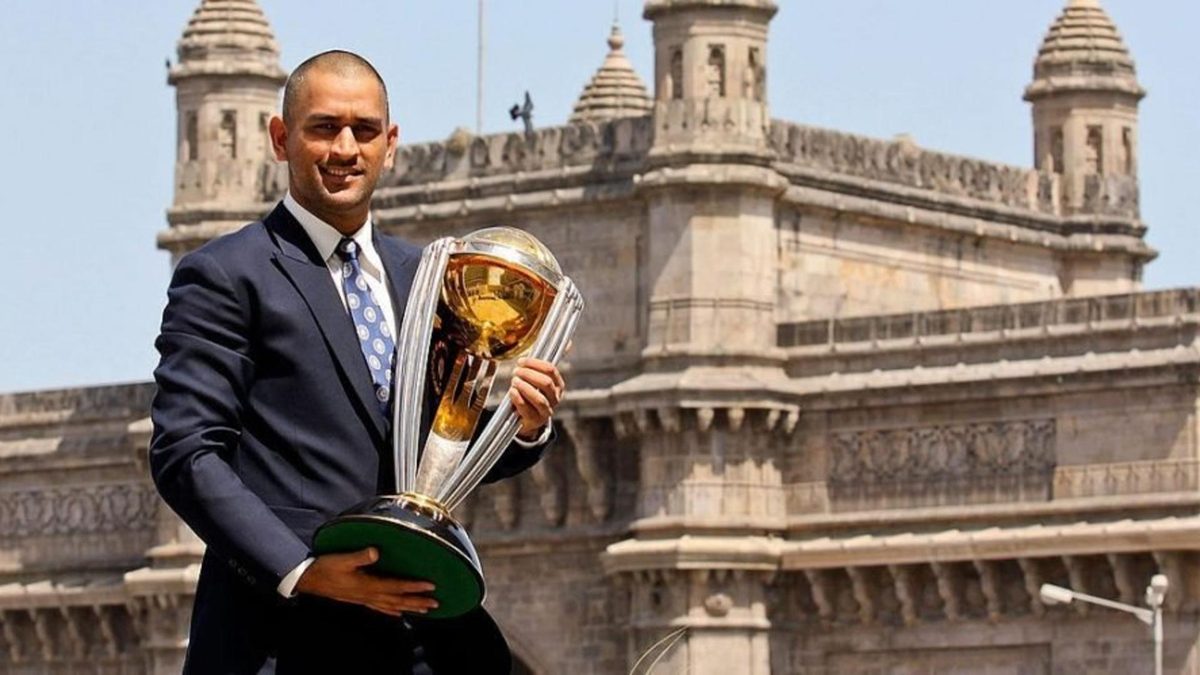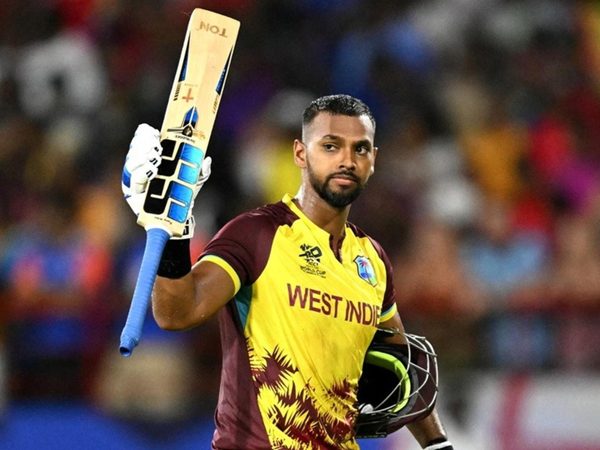
Phil Walker and Sam Stow applaud cricket’s finest reinventions – the characters who had enough of being one thing, and became rather impressive at being something else.
First published in 2010
First published in 2010
10) Tillakaratne Dilshan
We didn’t want to fill this list with converted openers, but the story of Dilshan – that of the meek middle-order bit-part prodder turned whirling shot-inventing dervish at the top of Sri Lanka’s order – just could not be ignored, and his rebirth just pips Graham Gooch in this sub-sub-category of cricketing David Bowies. As an opener he’s walloped three Test tons in eight matches, seven ODI centuries in 39 hits up top, and scooped 90mph bowlers clean over his head in the Twenty20 stuff . If T20 reinvented the modern game and stretched its boundaries, then Dilshan, diamond stud and all, is the revolution’s poster boy.
Happy birthday, Tillakaratne Dilshan!
Here he is, casually smashing Mitchell Johnson around the park pic.twitter.com/ufu0NoKvHf
— Wisden (@WisdenCricket) October 14, 2019
9) Geoffrey Boycott
Boycott. Now the one-man wrecking ball of the comms box. The overhaul from shots-refuser to shots-caller is only rivalled by the equally great Bill Lawry, a Australian who batted like a rotting corpse, and commentates like a kicking horse.
8) Ricky Ponting
No self-respecting top ten is complete without the Launceston Lancer. Everyone loves a ‘bad boy made good’ narrative, and the story of Ricky’s reinvention is an irresistible one. From boy genius, to drinker, to getting thrown out of Sydney nightclubs, to meeting his girl, to getting serious, to captain of his country, to battle-scarred guardsman of the faith and all-time great. He’s not the only cricketer to step back from the edge, not by a long line of shots, but few if any have been so ferociously driven to grab that reprieve and make something extraordinary out of it.
7) Kevin Pietersen
It seems baffling to consider it now, but when KP was 19, he was seen by his province, Natal, as a potentially useful off-spinner who batted a bit – his famous introduction to the England team came in 1999/00 when he smashed 60 from No.9 against Nasser Hussain’s tourists. A post-match chat with Nasser was one of the factors in his decision to elope to England to try his luck over here – not exactly the ordained path of the great cricketer. But Pietersen has never been conventional, and since ditching the off-breaks, the rest, as they say, has been all Brylcreem and brilliance.
6) Mark Ramprakash
There was a collective intake of breath in cricketing circles when Mark Ramprakash was picked to appear on a primetime BBC family entertainment show. Resolutely intense and proud of it, the reserved Ramprakash was far from your average chirpy cricketer. Beefy, Tuffers, Goughie… Ramps? What were the Beeb producers thinking? As it happens, what they were thinking was that this strikingly beautiful man would escape the shackles of county cricket and come to life on screen, shedding the ‘Underachieving Test Career’ tag in a whirl of sequins and smouldering paso dobles. And what did he do? He only went and won it. Having struggled for acceptance in the households of middle England throughout his Test career, there he was, right up front, making grown women (and a few fellas) swoon. If the producers of Strictly (as we like to call it these days) had done a generation-straddling job-swap with the Test selectors of the mid-Nineties, Ramps would have played 150 Tests.
5) Jeff Wilson
The CB Fry of the professional era, Jeff Wilson combined life as a record-breaking try-scorer with a successful cricket career for Otago and New Zealand. Either side of 60 Tests and 44 egg plants for a white-hot All Blacks side, he represented his country in two ODI series against Australia and also took the field for the first ever T20 international, his presence contributing to the overall air of farce as he sent down four ineffectual overs in the shadow of Hamish Marshall’s afro. Retiring from all sport soon after, he has since dabbled as a DJ on Kiwi radio.
4) Tony Greig
A reinvention-specialist, cricket’s chameleon-champion, it’s the mighty Tony ‘Correction’ Greig. Born in South Africa, blossoming in England, now big in Australia, he’s the cricket citizen of the world who had the chutzpah to infiltrate the exclusive buttoned-up club of the England captaincy in the mid-Seventies, and then the iron constitution to suddenly quit the post and head-up Kerry Packer’s cricket revolution in Australia, all carried off with a South African accent broader than Eugene Terreblanche’s. Then of course there was his cricket – an off-spinning, away-swinging, blocker-hitter leader-maverick in the finest Corinthian tradition. An All Out Cricket hero ever since he brought the house down with a truly great (and surprisingly dignified) speech at a dinner for old England captains, having flown in especially for the occasion, and because he still calls Boycott ‘Fiery’, which remains a patently great nickname.
3) Jack Russell
Jack Russell standing up to seamers was quite something to watch.
— Wisden (@WisdenCricket) May 2, 2020
Work your way through Jack Russell’s autobiography (go on, you know you want to) and you will find a passage – a description of the eccentric stumper re-shaping his beloved sunhat on a biscuit tin – that is oddly evocative of a ghostly Swayze at the potter’s wheel. It is painting and not ceramics, however, for which Robert Charles has a peculiar talent. So much so, that he has his own gallery in Chipping Sodbury and has produced portraits for a number of high-profile individuals, including the Duke of Edinburgh. When he dies he wants his hands surgically removed, then embalmed and placed in a glass case in his gallery – you read that right. Once mad as a brush, now not bad with a brush, Gloucestershire’s greatest ever gloveman has, in a stroke, become the master of a very different art form.
2) MS Dhoni
Straight out of Jharkand, the boy from the country, all rough edges and rugged good looks, effortlessly emerged as the classic Indian pin-up. With locks a-flowing, he smashed and smiled his way into the hearts of all sexes, but Indian cricket had a higher purpose for this lowly serf. Quickly installed as the skipper of India’s limited-overs side, he further endeared himself to the nation by leading his side to World Twenty20 victory over Pakistan in 2007, and shortly after he was rewarded with an altogether more surprising captaincy role. Replacing the princely Anil Kumble as India’s Test captain in 2008, a remarkable journey from hinterland to helm was complete. No less unaffectedly cool than his earlier days, Dhoni is now Indian cricket’s beating heart, and he’s got a whole lot more serious. The hair says it all: once silken locked, there was a time when Dhoni’s trips to the barbers were events of national import, but these days he simply slaps a pudding basin on his head and passes Gary Kirsten the clippers.
That bat twirl at the end is classic MS Dhoni 😍
Happy birthday, Captain Cool 🎂pic.twitter.com/S0LWzZMzXs
— Wisden India (@WisdenIndia) July 7, 2020
1) Learie Constantine
An extraordinary man who did much to advance the position of the black man in 20th Century society, first in the Caribbean, where Constantine grew up in poverty in Trinidad, rising above racial divisions in the workplace and on the cricket field – where “if nowhere else, all in the island are equal” – to become the first superstar of West Indies cricket; and then in England, where he became a respected community worker, barrister, diplomat and journalist, eventually becoming the first black man to enter the House of Lords.
His cricketing brilliance was established in the inter-war years, as an early incarnation of the dynamic all-rounder and the finest cover-point fieldsman the world had yet seen. As part of the first ever West Indies Test tour of England in 1928, curious English crowds would flock to see this exotic, inter-racial team from the outskirts of the Dominion, and they soon fell for the “spontaneous invention” of Constantine’s cricket. He’d arrived in England a stranger, but he departed a star.
July 1 marks the anniversary of the death of Learie Constantine, a man who was so much more than a great cricketer.
In the 1972 Wisden, John Arlott paid this tribute.https://t.co/XLNgENDtPr#wisdenarchive
— Wisden Almanack (@WisdenAlmanack) July 1, 2020
And he would return. Stitched around his feats as a trailblazer for the nascent West Indies team, Constantine became properly absorbed into English life during his garlanded years at Nelson CC in the Lancashire Leagues, where he won the league seven times. But by the outbreak of World War II the game was no longer his main motivation. He threw himself into his work as a welfare officer in Liverpool, tasked with highlighting the plight of local immigrant factory workers.
After the war his work spread further afield, into the establishment worlds of journalism and diplomacy, and, in 1948, he was duly elected to the role of president of the London branch of the Caribbean Labour Congress.
For the next two decades, right up until his death in 1971, Learie continued fighting for the rights of immigrants, in the law courts, on the wireless, in print, in the House of Lords and on the street, doing as much as any other person in British life to bring about the Race Relations Act. A national treasure, a black pioneer, a British adoptee still brave enough to warn his beloved country that it was only “slightly less intolerant than South Africa or America”, a great cricketer and an authentic Caribbean hero. Take a bow, Baron Constantine.








